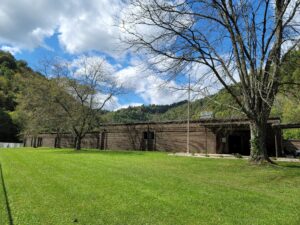By Gary Compton, Director of Contract Compliance
On Nov. 2, WestCare Kentucky employees, Anna Wakeland, Reginald Kaigler, and Johnny Mullins attended a reentry simulation presented by the Kentucky Department of Corrections’ Division of Reentry Services. Participants met on the Pikeville Campus of the Big Sandy Community and Technical College for the event.
The simulation mimicked the struggles and challenges faced by justice-involved individuals who are transitioning from incarceration into society. The goal of this simulation was for participants to gain an understanding of the obstacles faced by such individuals who are attempting to navigate the system.
Over the course of 90 minutes, participants experienced the first month of post-release life. Each participant assumed the identity of a justice-involved individual and received a packet of materials including a “Life Card.” The “Life Card” explained the reentrant’s criminal background, current living situation, current job, and the specific weekly tasks that must be accomplished in order to avoid the risk of being returned to prison for non-compliance of their supervised release. The simulation began with an explanation and instructions from the facilitator and the “reentrants” then set out to navigate their new lives. Each “week” takes place in a 15-minute segment.
Between each segment (at the end of each “week”), reentrants returned to their housing locations, which can be home, the halfway house, a homeless shelter, or jail depending on how successful they have been in satisfying the conditions of their release and accomplishing their assigned tasks. They then engaged in a guided discussion with the event facilitators debriefing them with regards to their experiences and helping them reflect on their successes and failures.
The event room contained 15 stations. Each station represented one of the many places a returning citizen must navigate. Each station had random elements which produced real life uncertainty when dealing with each of these agencies and organizations. These stations included or pertained to the DMV, probation, court, GED classes, the bank, an employer, a social services office, a church, a pawn shop, a landlord/rental agency, transportation, a health clinic, treatment, etc. Additionally, there were “monitors” and “officers” who check “Life Cards” to aid Probation Officers in assessing each “reentrant’s” level of compliance. They also identified those who may need increased levels of supervision.
Reentry simulations provide participants with the the perspective of the returning citizens. The intention is to represent a realistic landscape that justice-involved individuals might face when coming home. By experiencing the complex obstacles and barriers that these individuals must navigate, participants gain insight into the individual’s perspective and discover innovative ways to help them succeed.
WestCare’s Anna Wakeland stated, “Reentry services are extremely important to prevent recidivism. The Reentry Simulation opened the eyes of our employees and allowed us to see the challenges that citizens encounter when transitioning from incarceration to home.”




